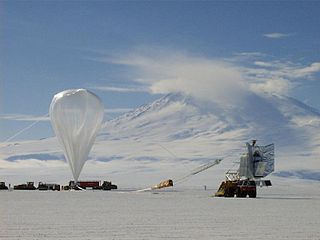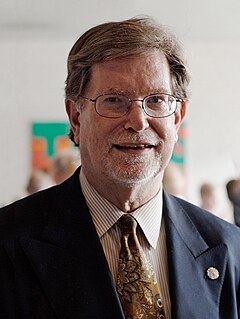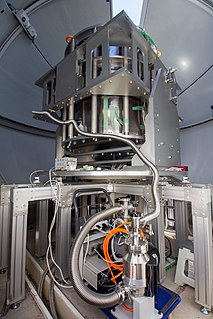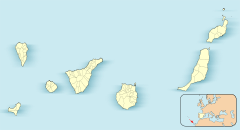
The Canary Islands, also known informally as the Canaries, is a Spanish archipelago in the Atlantic Ocean, in a region known as Macaronesia. At their closest point to the African mainland, they are 100 kilometres west of Morocco. They are the southernmost of the autonomous communities of Spain, and are located in the African Tectonic Plate. The archipelago is economically and politically European, and is part of the European Union.

Tenerife is the largest and most populous island of the eight Canary Islands. It is home to 43% of the total population of the Canary Islands. With a land area of 2,034.38 square kilometres (785.48 sq mi) and a population of 917,841 inhabitants at the start of 2019 it is also the most populous island of Spain and of Macaronesia.

The National University of San Marcos is a public research university in Lima, the capital of Peru. Also known as the University of Peru and the "Dean University of the Americas", it is the first officially established and the oldest continuously operating university in the Americas. Since its foundation, it was commonly referred as the "Royal and Pontifical University of the City of the Kings of Lima" until the Viceroyalty period and as of now, it is referred to as Universidad Nacional Mayor de San Marcos or La Decana de América.

The Cosmic Background Imager was a 13-element interferometer perched at an elevation of 5,080 metres at Llano de Chajnantor Observatory in the Chilean Andes. It started operations in 1999 to study the cosmic microwave background radiation and ran until 2008.

In astronomy and observational cosmology, the BOOMERanG experiment was an experiment which measured the cosmic microwave background radiation of a part of the sky during three sub-orbital (high-altitude) balloon flights. It was the first experiment to make large, high-fidelity images of the CMB temperature anisotropies, and is best known for the discovery in 2000 that the geometry of the universe is close to flat, with similar results from the competing MAXIMA experiment.

The Very Small Array (VSA) was a 14-element interferometric radio telescope operating between 26 and 36 GHz that is used to study the cosmic microwave background radiation. It was a collaboration between the University of Cambridge, University of Manchester and the Instituto de Astrofisica de Canarias (Tenerife), and was located at the Observatorio del Teide on Tenerife. The array was built at the Mullard Radio Astronomy Observatory by the Cavendish Astrophysics Group and Jodrell Bank Observatory, and was funded by PPARC. The design was strongly based on the Cosmic Anisotropy Telescope.

Teide Observatory, IAU code 954, is an astronomical observatory on Mount Teide at 2,390 metres (7,840 ft), located on Tenerife, Spain. It has been operated by the Instituto de Astrofísica de Canarias since its inauguration in 1964. It became one of the first major international observatories, attracting telescopes from different countries around the world because of the good astronomical seeing conditions. Later the emphasis for optical telescopes shifted more towards Roque de los Muchachos Observatory on La Palma.

The ESA Optical Ground Station is the European Space Agency's ground based observatory at the Teide Observatory on Tenerife, Spain, built for the observation of space debris. OGS is part of the Artemis experiment and is operated by the IAC and Ataman Science S.L.U.

COSMOSOMAS is a circular scanning astronomical microwave experiment to investigate the Cosmic Microwave Background anisotropy and diffuse emission from the Galaxy on angular scales from 1 to 5 degrees. It was designed and built by the Instituto de Astrofísica de Canarias (IAC) in Tenerife, Spain, in 1998. Its name comes from "COSMOlogical Structures On Medium Angular Scales" referring to CMB fluctuations. This experiment grew out experience of the previous Tenerife Experiment with the need to go to smaller angular scales with greater sensitivity.

George Fitzgerald Smoot III is an American astrophysicist, cosmologist, Nobel laureate, and one of two contestants to win the US$1 million prize on Are You Smarter than a 5th Grader?. He won the Nobel Prize in Physics in 2006 for his work on the Cosmic Background Explorer with John C. Mather that led to the "discovery of the black body form and anisotropy of the cosmic microwave background radiation".
José Luis Martí Soler is a Spanish professional football manager and former player who played as a central midfielder.

The Degree Angular Scale Interferometer (DASI) was a telescope installed at the U.S. National Science Foundation's Amundsen–Scott South Pole Station in Antarctica. It was a 13-element interferometer operating between 26 and 36 GHz in ten bands. The instrument is similar in design to the Cosmic Background Imager (CBI) and the Very Small Array (VSA). In 2001 The DASI team announced the most detailed measurements of the temperature, or power spectrum of the Cosmic microwave background (CMB). These results contained the first detection of the 2nd and 3rd acoustic peaks in the CMB, which were important evidence for inflation theory. This announcement was done in conjunction with the BOOMERanG and MAXIMA experiment. In 2002 the team reported the first detection of polarization anisotropies in the CMB.

Rodney Deane Davies CBE FRS was a Professor of Radio Astronomy at the University of Manchester. He was the President of the Royal Astronomical Society in 1987–1989, and the Director of Jodrell Bank Observatory in 1988–97. He is best known for his research on the Cosmic microwave background and the 21cm line.

The Museum of Science and the Cosmos, is an astronomy, technology, and science museum located in the city of San Cristóbal de La Laguna on Tenerife island, in the Spanish Canary Islands of Macaronesia. It belongs to the Cabildo de Tenerife and the Tenerife Organization of Museums and Centers. The museum opened in 1993 under the initiative of the Cabildo and the Instituto de Astrofisica de Canarias (IAC). It is considered the primary astronomy and science museum of the Canary Islands and the Macaronesian archipelago.
David Amaral Rodríguez is a Spanish former footballer who played as a midfielder, and is the current manager of women's football team UD Granadilla Tenerife.

Rafael Rebolo López is a Spanish astrophysicist. In October 2013 he became the director of the Instituto de Astrofísica de Canarias. He is a professor at the Spanish National Research Council. In 2002 Rebolo became an external professor at the Max Planck Institute for Astronomy and a member of the Max Planck Society.

Tenerife is one of the seven constituencies represented in the Parliament of the Canary Islands, the regional legislature of the Autonomous Community of the Canary Islands. The constituency currently elects 15 deputies. Its boundaries correspond to those of the island of Tenerife. The electoral system uses the D'Hondt method and a closed-list proportional representation, with a minimum threshold of fifteen percent in the constituency or four percent regionally.
The 2018–19 Segunda División season, also known as LaLiga 1|2|3 for sponsorship reasons, is the 88th season of the Spanish football second division since its establishment.

GroundBIRD is an experiment to observe the cosmic microwave background at 145 and 220GHz. It aims to observe the B-mode polarisation signal from inflation in the early universe. It is located at Teide Observatory, on the island of Tenerife in the Canary Islands.
The 2020–21 Segunda División, also known as LaLiga SmartBank for sponsorship reasons, will be the 90th season of Segunda División. It began on 12 September 2020 and is scheduled to conclude on 29 May 2021.

















